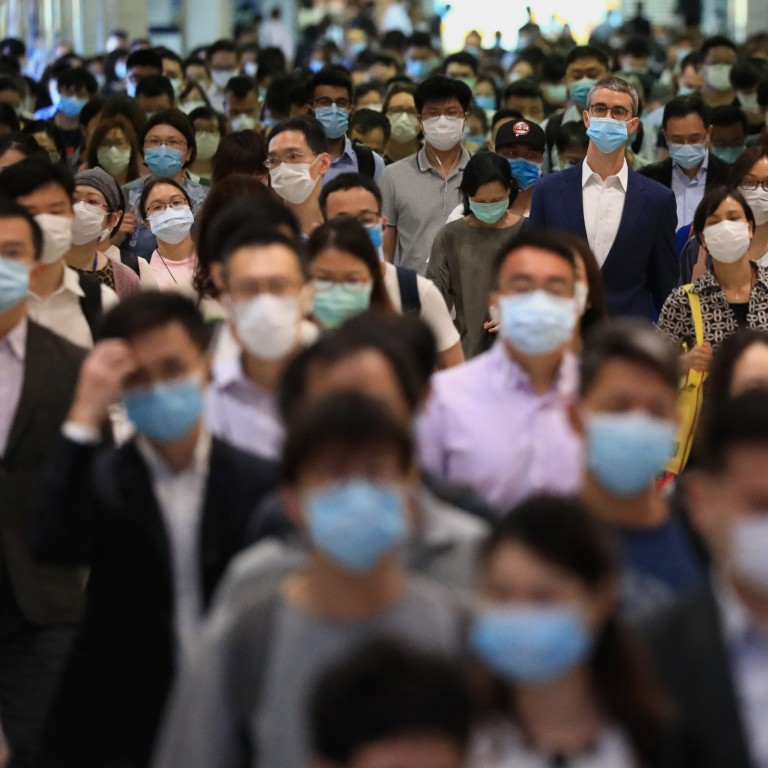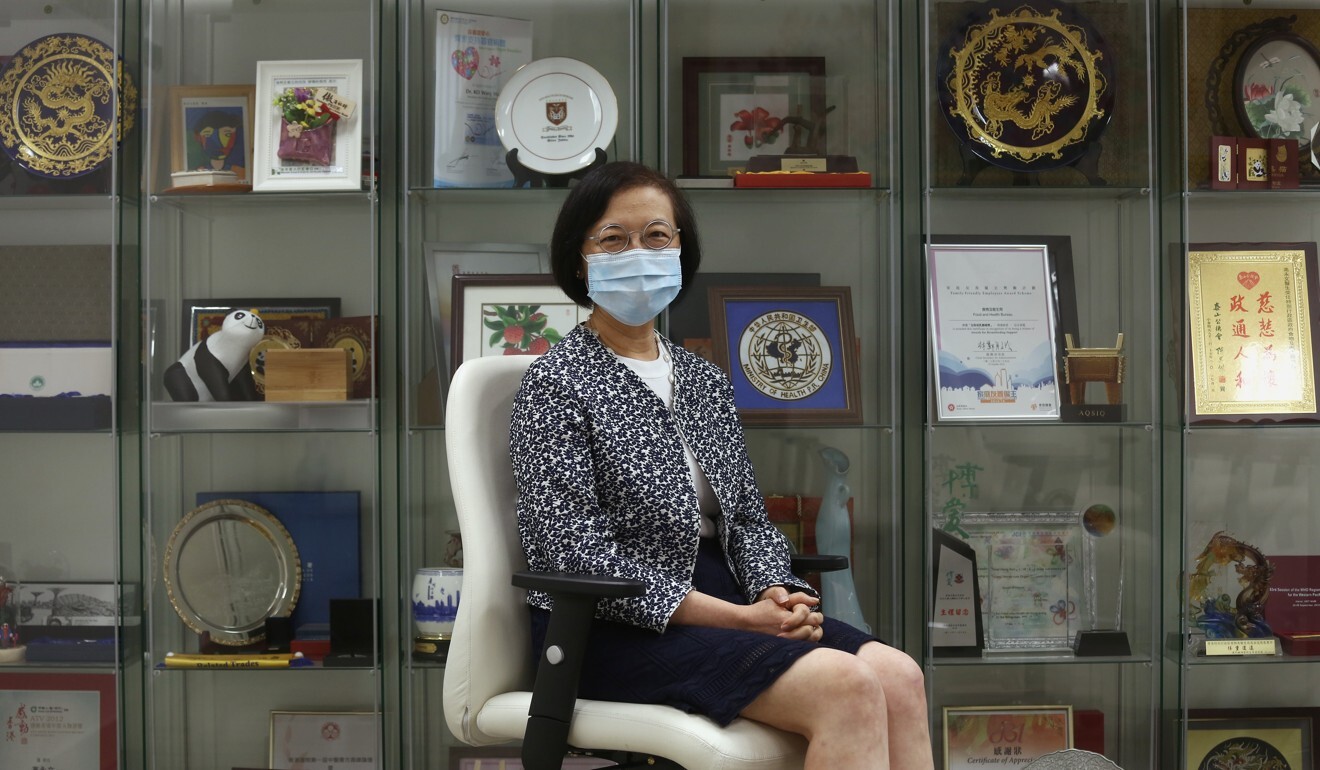
Exclusive | Coronavirus: Hong Kong, Macau and Guangdong consider ways to create a ‘travel bubble’ for easier movement across borders
- Hong Kong looking at colour-coded electronic check being used by Macau, Zhuhai
- Discussions under way to ease quarantine restrictions as Covid-19 cases come down
Creating the “travel bubble” will enable easier movement of people between regions that agree on the level of health screening required, and do away with imposing a 14-day quarantine on travellers.
In an interview with the Post, Professor Sophia Chan Siu-chee also said that temporary quarantine facilities being built on Penny’s Bay, a site on Lantau Island which includes land earmarked for Hong Kong Disneyland’s phase two development, could become permanent.

Since May 10, Macau and the neighbouring mainland Chinese city of Zhuhai have recognised each other’s health code system, to determine if individuals crossing the border ought to be in quarantine or can be free to enter buildings on the mainland.
The system generates coloured QR codes to indicate a person’s level of risk based on the individual’s state of health, contact with Covid-19 patients and travel history.
Isolated during Covid-19, Hong Kong’s victims of sexual violence relive terror
A green code means the person is well and not related to any Covid-19 cases, while red indicates infection, suspected infection or that a close contact is a confirmed case. Yellow means the person had fever or respiratory symptoms.
“We are looking into it,” Chan said. “What information does it need to generate a green light, how can the information be mutually recognised [by different administrations]?
“If we are really doing it, do we set up our own system, or adopt one from another administration? These issues haven’t been confirmed yet.”
Using such a common system could create a “travel bubble”, allowing the free movement of people in the region. This is already being done between Estonia, Latvia and Lithuania in eastern Europe, and has been proposed for Australia and New Zealand.
While there have been privacy concerns on whether a mutually recognised health code system would mean passing personal information to the mainland, which has a different legal system from Hong Kong’s, Chan did not consider it a major issue.
“The system will not collect more information than necessary,” she said. “The health code is just a tool. Even now, when we go to the mainland, we have to fill in some information on the health declaration.”
No new coronavirus cases in Hong Kong
So far, there have been 1,052 confirmed Covid-19 cases in Hong Kong, 45 in Macau and 1,589 in Guangdong province.
With the situation easing in Hong Kong and neighbouring cities, there have been calls to ease the mandatory quarantine requirement for travellers.
Hong Kong’s mandatory requirement for arrivals from the mainland, Macau and Taiwan is set to expire on June 7.

Before a “travel bubble” can happen, however, the authorities need to study a number of factors including mutual recognition of Covid-19 testing and quarantine arrangements.
Chan said no date had been fixed for relaxing the border restrictions, but added it would likely start with “a small number” of people, possibly those already exempted by the Hong Kong authorities for quarantine after arriving from the mainland, Macau and Taiwan.
These include people who commute regularly across the borders, such as professionals, factory and business owners, students and truck drivers.
Chan also said Hong Kong authorities had not begun discussions with Taiwan to relax the pandemic border controls, despite remarks to the contrary on Thursday from Executive Council member Arthur Li Kwok-cheung.
‘Now we are in a battle’
On the proposal to have permanent quarantine facilities in Hong Kong, Chan said the premises being built in Penny’s Bay met the criteria, except for its remote location on Lantau Island.
“That site is for the sole purpose of quarantine facilities,” she explained. “It’s not at a decision stage yet, but we can say it meets the criteria.”
Hong Kong currently has about 3,700 quarantine units at four sites. The government is building 800 units on four hectares of its land in Penny’s Bay.
By September, a further 700 units will be built on part of a 60-hectare site at Penny’s Bay zoned for tourism use and earmarked for Disneyland’s second phase. Whether the quarantine facilities coming up there will be permanent is subject to negotiation.
Chan stressed the need to think ahead, so officials would not have to “scramble to buy beds and fans like we did for Chun Yeung Estate”, referring to the newly built Fo Tan public estate that was turned into one of the quarantine centres.
Although the situation has eased a bit, we are still in emergency mode
Reviewing the past few months of grappling with the coronavirus, Chan said what proved most challenging was remaining in “battle mode” at all times, especially when Hong Kong was recording more than 60 new cases a day in late March.
“Many new arrangements were rolled out in a rush at that time,” she said, referring to the testing centre that was set up near the airport as an example.
As for criticism the government did not react quickly enough at the start of the outbreak, she said almost all involved matters that had already been acted upon or were being acting on, but had not yet announced.
Chan, who has not taken leave since the outbreak began, said: “Now we are in a battle. Although the situation has eased a bit, we are still in emergency mode.”
Help us understand what you are interested in so that we can improve SCMP and provide a better experience for you. We would like to invite you to take this five-minute survey on how you engage with SCMP and the news.

